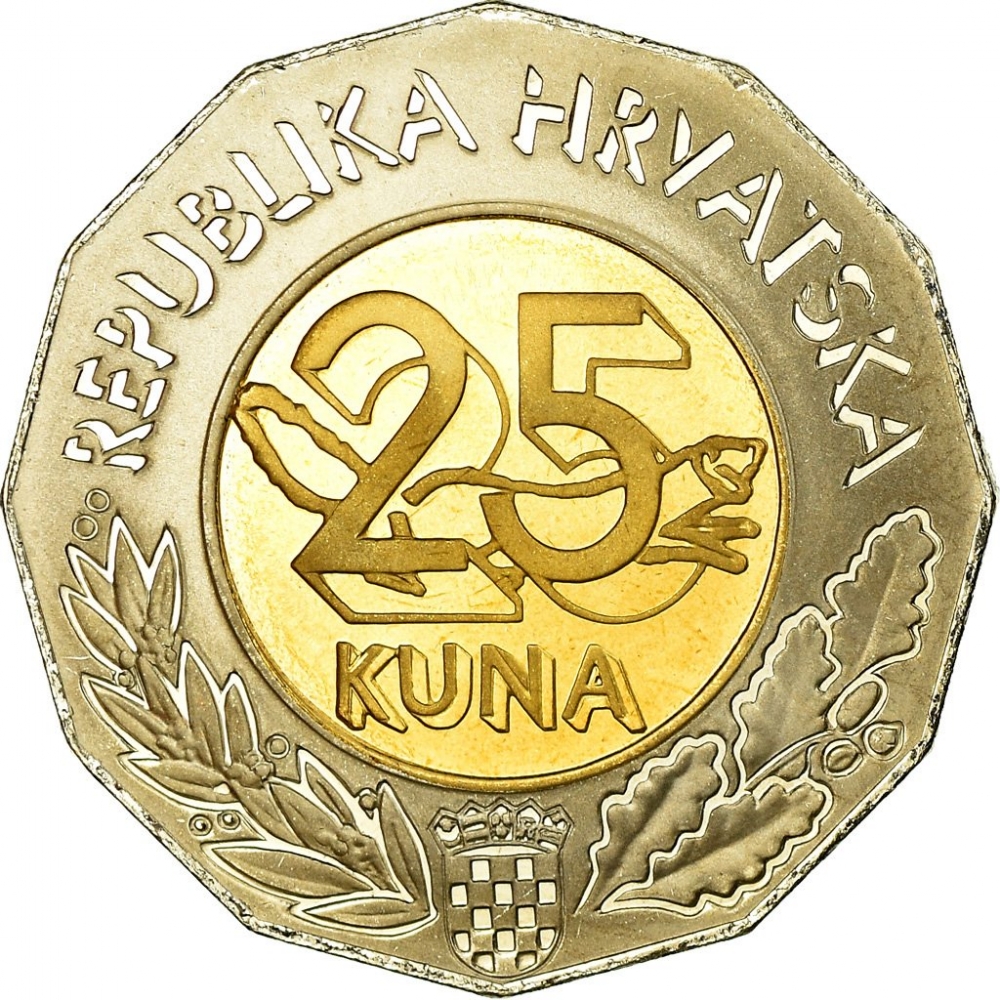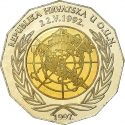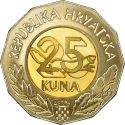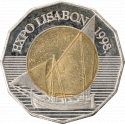You are about to finish your registration. Please check your mailbox (including spam folder). There should be a letter with a confirmation link. Check setting to make sure that your e-mail address is correct.
Send letter againDescription
The coin commemorates the first Croatian Esperanto Congress, in Zagreb, on 31 May and 1 June 1997.
Esperanto is a constructed international auxiliary language. With an estimated two million speakers worldwide, it is the most widely spoken constructed language in the world. The Polish-Jewish ophthalmologist L. L. Zamenhof published the first book detailing Esperanto, Unua Libro, in Warsaw on July 1887. The name of Esperanto derives from Doktoro Esperanto (Esperanto translates as "one who hopes"), the pseudonym under which Zamenhof published Unua Libro.
Release date: 24 June 1997
Designer: Damir Mataušić
Obverse

|
Еhe central part of the coin's core carries the symbol of the Congress, an elliptic circle within which eight elongated rhombs are placed in two vertical columns, pointing at one another with their tips. Of the five rhombs in the left column, the third and the fifth are filled with vertical lines. The right column contains three rhombs, all filled with vertical lines, symbolizing the red and white fields of the Croatian historical coat of arms. All eight rhombs are connected, forming the capital letter "E" (i.e. Esperanto). An identical rhomb is placed centrally at the lower part of the ring, with the inscription "First Congress of Croatian Esperanto" in Esperanto beginning on the left side of the rhomb and stretching along the ring to its right side. The second, inner, strip of the ring's surface features the inscription "First Congress of Croatian Esperanto" in Croatian, separated by the minting year, placed centrally in the lower part of the strip, above the elongated rhomb. "UNUA KONGRESO DE KROATAJ ESPERANTISTOJ" |
|---|---|
Reverse

|
The central part of the coin's core carries the designation of the nominal value 25. Within the numeral outlines, the figure of a pine marten running towards the right is shown; the marten's body is integrated with the numeral denoting the nominal value. In the bottom, central part of the coin's ring the coat of arms of the Republic of Croatia is impressed. A blooming laurel branch is placed in a semicircle on the left to the coat of arms, while a common oak branch with fruits is on the right. The top part of the ring carries the semicircular inscription The Republic of Croatia. REPUBLIKA HRVATSKA |
| Edge |
Characteristics
| Type | Commemorative Issue (Circulating) |
| Material | Bi-Metallic |
| Ring | Cupronickel |
| Center | Copper Aluminum Nickel |
| Weight | 12.75 g |
| Diameter | 32 mm |
| Thickness | 2.2 mm |
| Shape |
|
| Sides | 12 |
| Alignment | Medal |
| Mint |
Croatian Monetary Institute (HNZ)
|







